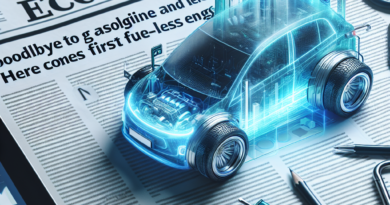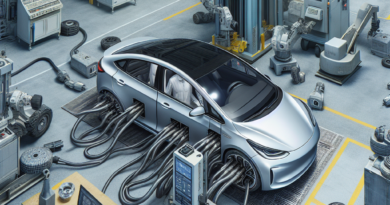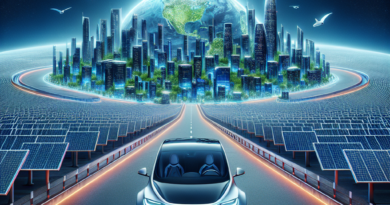A New Engine Innovation Could Render Electric Cars Obsolete
A Breakthrough in Engine Technology
Imagine an engine with zero emissions, low production and maintenance costs, and weighing just ten kilograms.
This isn’t science fiction; it’s the latest innovation from Israeli company Aquarius Engines.
This revolutionary engine, if progressed from prototype to production, could dramatically reshape the automotive industry’s future, especially at a time when the sector faces significant challenges.
The Current Automotive Landscape
The European Union is at a crossroads, debating whether to uphold the ban on diesel and petrol engines by 2035 or to reconsider this controversial regulation, which has received opposition from several countries, particularly Italy, yet is supported recently by Germany.
This impasse has led to a notable decline in automobile sales in the EU, with a staggering 36% drop in electric vehicle registrations in August, suggesting that consumers are hesitant and awaiting clarity on regulatory changes from Brussels.
Aquarius Engines’ Hydrogen-Powered Solution
In this complex environment, Aquarius Engines showcased its new hydrogen engine, successfully tested by the Austrian company AVL-Schrick, demonstrating its ability to run entirely on hydrogen without a hitch.
The newly designed engine builds upon a previous model from 2014 that used petrol.
However, Aquarius has now shifted its focus to harnessing hydrogen as a primary fuel source.
With a minimalist design, unlike traditional combustion engines that comprise hundreds of moving parts, this new engine features a mere single moving component: a solitary piston.
The Mechanics of Innovation
This linear engine allows for the piston to traverse in one direction along a single axis.
As the piston moves back and forth, hydrogen is injected alternately into either side of the cylinder, resulting in controlled explosions that drive the movement.
In stark contrast to the hundreds of components found in conventional internal combustion engines, Aquarius’s design encompasses only twenty fixed parts.
This reduction promises lower production costs, enhanced efficiency, and simplified maintenance.
Moreover, during its operational cycle, the piston’s ends engage with magnetic coils that generate electricity, providing the capability to charge an electric vehicle’s batteries.
The Environmental Impact and Future Potential
Notably, this innovative engine boasts a power output of 16 kW, with plans for a future version delivering up to 80 kW.
The most striking advantage is its environmentally friendly profile, as the combustion of hydrogen results in pure water vapor emissions.
In conclusion, this non-polluting engine could revolutionize the car industry by significantly lowering electric vehicle costs, reducing battery size and weight.
The automotive world is on the brink of a genuine transformation.




